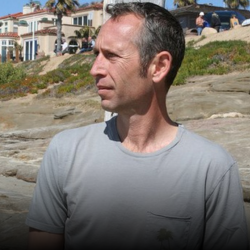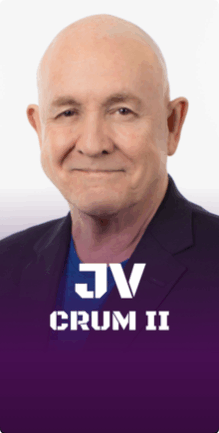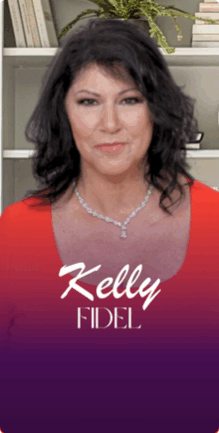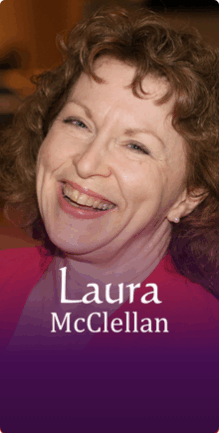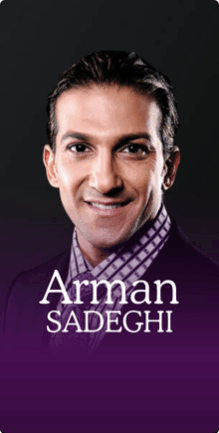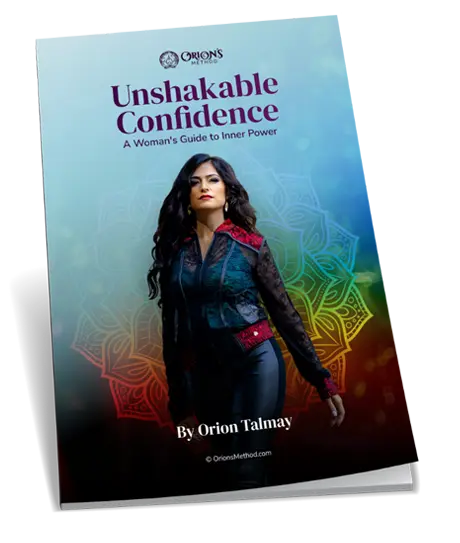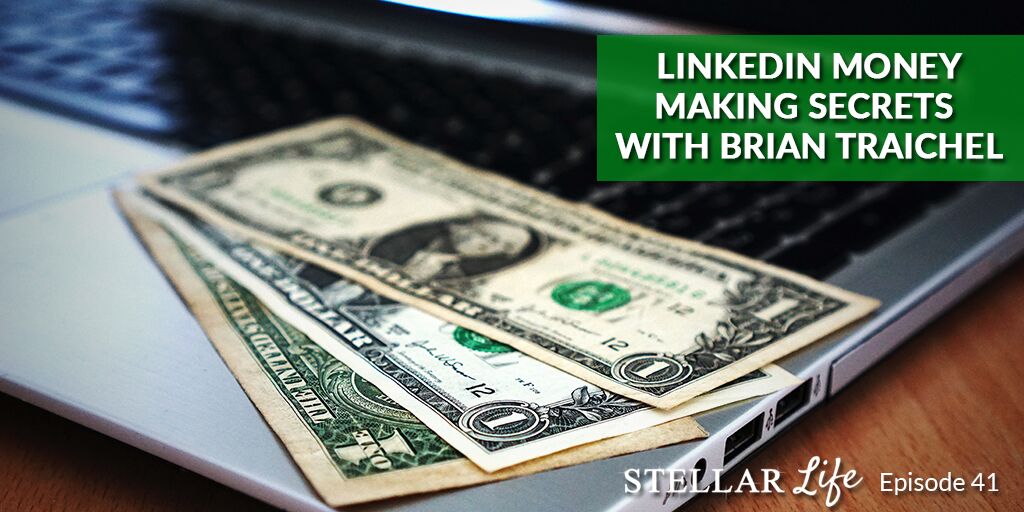
In this Episode
- [04:28]Brian starts things off by telling us a bit about himself, his career history, and how he discovered LinkedIn.
- [06:14]Why is LinkedIn so powerful? Brian talks about the value of LinkedIn’s nature as a business site.
- [08:35]Your LinkedIn profile may be the first thing people see about you online, so it needs to have the equivalent of “curb appeal,” Brian tells us.
- [10:02]Brian talks about what kind of profile picture you need on your LinkedIn profile.
- [10:34]In your description, you only have a few sections to capture someone’s attention. Brian lists what should be in your summary section. He goes on to talk about the 22 sections of a full LinkedIn profile, and explains what belongs in the “education” section.
- [13:45]One of the roles of your LinkedIn profile is to answer questions people have about you and your skills and abilities.
- [14:53]Brian reveals that he actually uses the free version of LinkedIn, not the premium version. He then goes on to estimate that 80% of his business has come through LinkedIn.
- [16:18]Once you have your picture and profile filled out on LinkedIn, what do you do next? Brian’s suggestions: share your Facebook updates there as well, and join LinkedIn groups. He also describes the power of LinkedIn groups, and how they make it possible to reach thousands of people in minutes.
- [18:16]Brian talks about the etiquette of connecting with people. For him, it’s all about personal connections.
- [19:55]Brian shares his script for what to say when you call people from LinkedIn. His first example is of a client calling a provider, and the second is of a provider calling a potential client. In both examples, his emphasis is on making a human connection, not talking business. Once the connection is made, he suggests drip marketing.
- [22:59]We learn more about drip marketing through LinkedIn. What Brian does is endorse each connection for a skill every week, so that his name will come to mind when that person needs someone who provides his services.
- [25:15]Brian suggests investing at least 30 minutes a day in LinkedIn. He explains why.
- [26:04]What do you do if you aren’t connected to someone and haven’t spoken with them, but want to connect with or talk to them? How is the answer different if the person isn’t in your industry?
- [27:33]Brian talks about whether to accept everyone who sends you a request on LinkedIn. He accepts anyone who has at least 50 connections, a picture, and a summary.
- [28:36]How many people does Brian connect with a day? How does he keep track of them? He suggests using LinkedIn’s tagging feature rather than Excel or another tracking system.
- [29:14]We hear more of Brian’s thoughts on groups. He especially recommends starting your own LinkedIn group.
- [31:29]Brian explains what LinkedIn Pulse is. He says it’s basically your LinkedIn feed.
- [32:03]LinkedIn is better than Facebook for Brian’s purposes, and he tells us why.
- [32:27]Brian gives his little-known secrets, including instructions on how to view people’s profiles invisibly and how to change how to see who can view your connections.
- [34:28]The #1 thing you should never do on LinkedIn is sell to someone after they accept your LinkedIn invitation.
- [35:05]Brian talks about best practices for LinkedIn groups.
- [37:18]What are Brian’s three tips to living a stellar life? 1. Be your own guru (meaning you should follow your gut). He gives an example of how he did this. 2: Become a minimalist and declutter. 3: Exercise the law of non-attachment. He and Orion go on to discuss the value of non-attachment.
About Today’s Show
Hello Brian! How are you doing today?
I’m doing great, Orion. Thanks for having me on your call today.
Thank you very much. I am so excited because today we’re going to speak about something that I know nothing about which is LinkedIn. I’m so happy that you are here to show me the way and probably help all our listeners too.
I definitely want to give you a few tips and some things to kind of demystify what is LinkedIn and why do I need it. I have a profile, I don’t know what to do with it and I get a lot of requests. I’ll help you with that.
Okay. Awesomeness. Let’s start by you sharing a little bit about yourself, what you do, and how did you find yourself being a LinkedIn expert?
First, I’m out here in San Diego. I’ve been in sales for 19 years. I’ve always studied the sales processes and strategies. I sold title insurance for a very long time and I discovered LinkedIn in 2004 as a very small footnote in an article about things to come in the next year. I took that to heart and I started playing around with LinkedIn since 2004. I was able to use that when I sold title insurance to help me find the right customers and get information that otherwise would take me years to get if I was just going in networking events and things like that. My track record has been the real estate mortgage but then I did shift to the motivational speaking industry where I worked with Brian Tracy for three years and I’ve also worked with some other ones like Michael Gerber and Tony Robbins and got into a lot of personal development with Barbara De Angelis later on too. Those are some of the top names I’ve worked with. Right now, I’m actually doing consulting and training using the LinkedIn platform to really any business owner and sales people that have a need to find a good ideal, I call it finding your magic wand client. LinkedIn allows you to do that and we’ll talk more about that. But I’ve been a student of sales. I use LinkedIn everyday and I think it’s like www.match.com for business.
Wow, www.match.com for business, I like that. You know what, I’ve been out of the dating world for a while, especially online dating, and I know nothing about LinkedIn. People are saying that it’s amazing and you can get so much improvement in your business through LinkedIn. Why is it so powerful? What is that platform exactly? How do you see it?
LinkedIn is where everybody goes to put their professional experience, their resume, their interest and things like that. It’s not like Facebook where Facebook is a lot of people have their private Facebook, it’s for their friends and family. When they look at LinkedIn, they say, “Well, that’s for business only.” But a lot of people I work with, they’re missing half of their audience because a lot of their friends and family are their best referral partners. To migrate over to LinkedIn and have it be business where it’s a business to business site versus me selling to you on Facebook, some people take offence to it because it’s not a selling site, it’s supposed to be for personal relationships. But on LinkedIn, it’s called a business networking site. At least you know why people are contacting you and there’s no elephant in the room when they do want to discuss business, you wouldn’t be offended because that’s what the nature of the site is, if that makes sense.
LinkedIn is where everybody goes to put their professional experience, their resume, their interest and things like that. Share on XI get it because sometimes on Facebook I’ll get somebody out of the blue, somebody I haven’t talked to ever, and they will just offer me a seminar or workshop. I’m like, “You are one my few thousand friends but who are you again?”
Exactly, that’s the thing. Same thing with LinkedIn, people are accepting invitations and going about their business and they’re always looking to meet new people so they go to networking events, they go to workshops and seminars. But if they look at their LinkedIn contacts, they may have 300, 500, 1,000 people already in their database that they haven’t even talked to. Those people said yes to them already because they’re connected. Before you go out and meet new people, I always advise go through your network first, find out who’s hiding in there that you have no idea you’re already connected to. I’ve been to workshops and seminars where I’ve met people for the first time in person, asked to connect with them to find out we were already connected and had been connected for years. It’s kind of fun how that happens.
That happens to me too. Not through LinkedIn, through Facebook. People are like, “Oh, we’re Facebook friends and I see your post.” I’m like, “Really? Great.” And then there’s this awkward moment where you don’t know what to say but great. The first thing on LinkedIn is our profile. What kind of tips can you give us about the profile?
To start with the profile, the first thing you want to do is it’s almost like, in real estate, you use the term curb appeal when you drive up to a house or when you walk into an open house, you want to have the music playing, a candle going, everything is clean and tidy. It’s really your first impression that your customer has of you when they go on your LinkedIn profile. People neglect it a lot. What they don’t realize is that if you were to Google yourself, you’ll find that LinkedIn in some cases may be the first thing that people see or the second or third. It’s very highly search engine optimized. Imagine you’re an expert and you’re telling everyone you’re an expert, and maybe you’re great on Facebook and you have a great following, but LinkedIn shows up and you have no picture, 30 connections, a mild summary or no summary, or really no information at all, and your skills are not 99+, and you have no recommendation. As a business professional, I’m going to pay attention to that and may or may not make the decision that I do not buy your product or service because of what I see on LinkedIn, because that is your professional blueprint on the internet. Like it or not, I tell people you either go in 100% or you don’t go in at all and delete your account because there is really no middle ground when it comes to a LinkedIn profile.
Right. Let’s start with the picture. What kind of picture do you need to have?
A head shot, professionally done is fine. A lot of people fold off on their LinkedIn profile because they feel they need a professional shot but the reality is if you are dressed up business, casual, or in some setting, literally using your iPhone picture is better than no picture. Don’t let not having a professional photo stop you from uploading something. Because by not having a picture, it doesn’t build trust and credibility with the person who’s landed on your profile.
With the description, is there some kind of a formula to write a description of what you do?
The main thing is again you only have a few seconds. If someone is searching for a service provider or a product and they find you on LinkedIn, your summary is going to tell them who you are, what you do, what problem you solve, and how you do it. You’re also going to want to list your specialties because the summary section is where all the keywords need to go. That’s going to help you when you’re ranking. The more information you put in the summary about what you do, how you do it, what you use in your product or service goes into the summary.
Do I need to add my education or it’s not a biggie?
Education is a section. To recap, there’s 22 sections to have a full completed LinkedIn profile. Most of us are able to fill about 19 of them whereas some of the other ones aren’t as necessary but you literally have 22 sections to put in all types of information. My philosophy is everything counts on LinkedIn. I don’t care if you did it in high school or ten years ago or yesterday, you want to keep adding as much as you can because the more you have, the more you can be found.
Okay.
If I can add one more thing on education, a lot of people get stuck on education thinking it’s only formal education. Maybe you have a degree or an associate degree, bachelor’s degree, MBA, but there’s more education out there. I know yourself, if you’re in the personal development transformational field, you go to seminars, you pay for courses, you go on retreats, all that education actually counts towards making you a better professional and a better person. I list those things under the education section like Landmark Forum or maybe a Tony Robbins event. If you think about it, you paid money for it to get information. In essence, that is education and that education is usually focused on your industry which makes you even more of an expert because you can refer to your profile and say, “Not only do I coach people on relationships but I also spend a lot of money and time going to other events so I can make sure I’m at the top of my game.” You’ll see that reflected in my LinkedIn profile.
Yeah, I feel like I need to go back and list all the seminars that I’ve done because I’ve done so many, I don’t even remember how many I’ve done. It is really seriously, I’m doing about an average of two workshops or seminars a month, if not more.
What do you think you’ve spent over the course of all the education in dollar amount in the seminars?
I don’t know. Maybe even like quarter to half a million dollars.
Right. When someone’s coming to you for advice or thinking about going on a program, not only you are an expert but you can show them why you’re the expert. And then if you started talking about pricing and things like that, if you’ve spent almost half a million dollars for the information you have and you’re only charging me X, that’s a bargain. I don’t want to spend $500,000, I’d rather just ask you.

Exactly. Plus I’m super intuitive and I can really help.
I know, exactly. What happens is your LinkedIn profile allows people to go there and it answers the questions for them because I never want to sell anybody. If I get into a situation where I feel like I need to convince the person that I’m the best for the job, then I’ve already lost. What I say to them is, “If you have any concerns, my best advice is to go to my LinkedIn profile, look at my experience, look at my recommendations, look at my education, and you’ll see I have a list of references, videos, information of everything that I’ve done and make your final decision based off what you see there.”
We met at JVx which is a joint venture seminar. It was really, really cool because Lisa Sasevich gave that tip where your squeeze page is selling for you. I guess it’s the same here where your LinkedIn page is selling for you.
LinkedIn in essence, is a free squeeze page that has been given to you by LinkedIn for no fees or whatsoever and you can maximize that as much as you want. I’ve been using the free version for 14 years.
You’re just using the free version?
Basic free version. If I’m going to teach people, I don’t want to have the premium. I need to show you how you can use your free profile versus your premium.
How many sales do you think you’ve done through LinkedIn?
I would say 80% of my business is all through LinkedIn and the rest is from the people I’ve met on LinkedIn.
Holy wow.
My success story is I told you Brian Tracy is a big hero of mine, I used to listen to him, audio tapes and in programs and I said, “One day I’m going to connect with Brian Tracy on LinkedIn.” I did and he responded back and then literally the short version is three weeks later I ended up becoming his business development manager and I worked there for three years because I sent him a message on LinkedIn.
Wow. I had the honor and pleasure of meeting Brian Tracy in person at a Robert Allen event and he’s a very, very cool guy. I really like him. Kudos to you for taking those steps and attracting into your life what you really wanted and using this magical, mystical tool. Still magical and mystical for me. I don’t even know how to use it. I have a beautiful profile and I edit stuff on it but then what, what am I doing with it?
Well, what you’re doing is that you’re going to do a couple of things. If you’re posting on Facebook, why not take an extra two seconds and open up a new tab on LinkedIn and share the update there as well? It’s a different audience. Not to mention, LinkedIn has a groups function so there are 50 groups that are associated with subject matter of interest. Maybe you like to play tennis, well guess what, there’s a tennis group on LinkedIn. I think it’s kind of funny how a professional business site has things about tennis or golf or sports teams. What they’re basically saying is, “Here’s a bunch of professionals but when we’re not doing our thing, we like to go to baseball games. If you want to join our group and network, here we are.” You can join 50 of those groups.
Oh wow. Can you leave groups and then change and get into different groups?
You sure can, absolutely. Here’s where the math goes crazy. Imagine a blog—you have an article about relationships, right?
Yeah.
This could apply to a segment of the population but imagine taking that post and posting the same post in 50 groups where each group has an average of 2,000 to 40,000 members. You can literally reach 100,000 people in three minutes.
Wow. I blog for Huffington Post so should I just recycle all the articles as well?
Yes, you should.
Oh wow. That’s really cool.
You’ll be surprised with what kind of traction you’ll get on LinkedIn because you’re all sharing information, you’re all part of that group because you like the same thing.
I put my article out there and maybe people reacted and maybe they didn’t. How do I actually go after people or after potential prospects and try to connect with them? What’s the right etiquette? How do I even talk to them?
My personal etiquette is the old school way of selling, which to me has never changed, it’s about personal relationships. Even to the point where you and I connected, you and I connected not even in a business setting, we connected in a coffee line and neither one of us knew we were both in the seminar until we started talking.
I remember that. I was on my way to the gym and I was like, “Oh no, it’s too early, I need green tea.” And then I went and got green tea and we started talking and it was such an awesome conversation.
That’s what you can have on LinkedIn. When you share similar interests, you and I weren’t talking business from the beginning, that’s the difference because we’re going to talk about similar interests. If there is a business opportunity, we’ll discuss it. If there isn’t, we’ll still make a new contact with someone with a similar interest which is always great. For you to say LinkedIn is going to generate leads, it’s more of it’s going to help you connect deeper with people that you decide to pick up the phone. You talk about dating and things like that, some things are just plain awkward. It’s not easy to walk up to someone and start a conversation, right? What can you do is you can search LinkedIn for people with similar interests as you and your geographical location. And I recommend when you find those people, you pick up the phone and you call them. Everyone says it’s awkward but it’s only awkward for seconds because I’m calling someone and I’m being completely transparent. Would you like me to share with you the actual script when you call somebody?
Oh yeah, teach me how to flirt on LinkedIn.
It’s very transparent and all you have to remember is tell the person what you did step by step. I’m going to share an example. Let’s say I was looking for a relationship coach and I found you on LinkedIn. I wanted someone in Santa Monica so I put that in the keyword. I typed it in and then I would call you up and I would say, “Hi Orion, this is Brian Traichel.” I stated my name, that’s a true fact. “I was looking on LinkedIn for a relationship coach,” which I was, “I found your profile,” which I did, “and I read your profile and it seemed to be that you might be a good fit because we have some similar interests such as yoga, working out, personal development and I thought I would give you a call. How’s your day going?” Where in that whole script did I say anything with sales or try to get you to do anything?
In that case, you didn’t because obviously you’re going to be the client. What if it’s the opposite, when you’re pursuing a client and not—it seems easier when you’re pursuing a service provider—it’s a little easier because you’re going to pay them. They’re going to be your coach. But what if it’s a prospect?
I’ll just tweak it just just a hair. When it’s a prospect, you’ll say, “Hi Orion, this is Brian Traichel. I was on LinkedIn, I was looking for people in the Santa Monica area that also had an interest in personal development and I found your profile. I thought I’d pick up the phone and connect with you and see how your day is going.” That is awkward for about a second. But because we have a certain thing in common like we went to the same college, or high school, or a certain program, or we’re in the same group, I’m going to talk about those things and the truth is, I’m not even going to try to sell you anything. My only goal is to meet you, find out if we’re a fit, and then I’ll say, “Do you mind if I send you a connection request?” Once I send you the connection request, you’ll most likely accept it and then I will start drip marketing on you for the next 50 weeks based on some systems that I have.
Ooh, drip marketing.
I will not talk business. I will only talk about the Boston Red Sox, the Chicago Cubs, the Los Angeles Rams, or whatever it is that I feel like talking about. What I will tell you is that most professionals, if you call them at [3:00] in the afternoon and talk about anything other than work, they’ll love to take a break from their normal day and talk about music, travelling, anything that you have in common. The shortest call I’ve ever had has been seven minutes long with a total stranger.
The longest?
45 minutes.
How freaking cool! Wow. I can see why it’s so nice because it’s so nice to have that human connection. People want to be heard and people also, like you said, they would love the distractions. Wow. That sounds really cool. You mentioned drip marketing. What’s that?
Drip marketing. LinkedIn allows you to have a CRM that’s built into the system.
What’s a CRM?
A Client Retention Manager.
Okay, CRM.
Basically, you can segment your connections by certain things. I can put everybody that I met at JVx in a certain category. I can put everybody that I know from their real estate business in a separate category. If I had a campaign and I want to message people, I can go through my connections, find only the ones that I want, and start sending personal messages to every single person based on the topic that I’m trying to promote.
Okay. How do you do it? You set it over 50 weeks? 50 days?
That’s using the endorsement. You’re probably getting them from people who are saying so and so endorsed you for a skill. Have you received those?
Yeah, I have.
People are getting endorsements. What I do is I give one endorsement to that person for a week. LinkedIn allows you to have 50 skills on your profile. If I put you in my CRM and I schedule every Monday to endorse you for one skill, what happens is every Monday you’ll get a notification and it says, “Brian Traichel just endorsed you for a skill.” You might think about me for 30 seconds and that’s fine.
Oh, cool.
Now, let’s say I do it next week on Monday again, “Brian Traichel endorsed you for a skill.” Imagine I do that for 50 weeks, do you think that when you have a need for my service or product that my name may come up in your subconscious.
May. Wow. That’s a very ninja tactic.
It’s brave. Again, it’s free. All you have to do is set it up. Be diligent about doing it. It’s a little heavy in the beginning but once you get it going, you can go on autopilot.
Oh wow. How do you go on autopilot? You just schedule it?
You schedule it and then you have that muscle memory where you just go in, click here, click there, click there, back and forth and you get into a rhythm and you can probably do this exercise in seven minutes a week.
How much time does the average entrepreneur need to invest in LinkedIn everyday?
It depends on what they want to do but I would invest at least 30 minutes a day.
Okay.
The reason I say that is because a lot of people do not shut their LinkedIn messages and I can’t tell you how many times I worked with real estate agents that will go through their old messages and someone was looking to sell or buy a piece of property and they find out that it’s a three-month old message.
Oh wow. You just endorse them, you don’t send them private messages?
No, you could if you want to, but I think just for now you want to do the endorsements. You always have that ability to wish someone a happy birthday, send them a private message and check in, but that’s up to you on how you want to create the frequency for each person.
If you want to say hi to a person, what will be the script for that?
Have you spoken with them?
No, I haven’t spoken to them yet.
Are you connected to them already?
No.
Okay. You’re not connected, you haven’t spoken to them and you want to send them a message. The easiest thing to do is you have to send them a connection request.
Okay.
They’re going to want to know why are you reaching out to me. See, LinkedIn will put in the request, “I’d like to add you to my professional network.” You probably get that a lot.
Yeah.
What that really is saying is that I didn’t have enough time to put a personal message so I really don’t care about you that much.
Oh.
The easiest thing to do is I go with a less is more strategy. All I would say to you if I was reaching out to you, I didn’t know you, I wasn’t calling you, I would say, “Hi Orion, I’m looking to connect with other industry professionals in Santa Monica.” I’m going to hope that my profile, when you look at it, is good enough for you to say, “He seems like a decent enough guy. He’s got a picture, he’s well connected. Sure, why not, I’ll accept him in my network.”
That is so cute. What if it’s somebody who’s not in my industry?
Then it’s why are your reaching out to them. “I saw from your profile we share a similar interest in Los Angeles Rams football and I’d love to connect with other professional on LinkedIn.” 90% of the time, you don’t have to put a message and they’ll still accept your invitation.
90% of the time, you don’t have to put a message and they’ll still accept your invitation. Share on XIs it okay to accept everyone that sends me an invitation on LinkedIn or should I be picky and make sure that I’m surrounding myself with the right people on LinkedIn?
Well, I accept everybody but I set a parameter. They must have 50 connections and they must have a picture and a summary.
Okay.
If you don’t have those things, I’m not going to say yes.
Okay, got it. You’re not as picky?
No. But the other thing to remember is don’t accept the invitations just to accept them because if you do nothing and you go back three months, you won’t remember who the person is. There’s no rush to accept everyone’s invitation. The key thing to do is read their profile before you accept it. If you think it’s someone that’s a good fit for you, you accept it and then pick up the phone and call them because it’s fresh, and say, “Thanks for reaching out. How can I help you? I assume we have this in common.” Or send them a message saying, “Hey, thanks for connecting. How can I help you? How can I best support you?”
How many people do you connect a day and how do you manage those conversations? How do you remember who you talk with? Do you have a spreadsheet?
Because I segment all of the people that come into my network with a tag. There’s a tag function so I can tag you for five different things.
Okay.
You do that immediately or else you’ll forget.
Wow. There is so much to it. It feels like I need to go to a LinkedIn university.
Well, I could probably show you. An average person, I can get them up to speed in about four hours.
Really? Wow. That’s amazing. I know that you mentioned groups. How do I use groups? How do I get involved in groups? How many times to post? What should I post?
Well, you have all the content already. Start thinking about who would like to read that content in those groups. Which groups would resonate with your message?
Right. What about opening my own group?
I advise that even more. Let people—if you build then they will come. If you build that group and you can announce that group on LinkedIn and you can even announce that you have a new group on LinkedIn on Facebook so you get both audiences.
How cool. What do you do about the name? How do you come up with a kickass name?
Well, you have to cater to the group. What group would you want to create?
I want to create a group for single ladies looking for love.
Okay, are they single business women or are they simply single ladies?
Single, smart, successful entrepreneurs looking for love.
Right, perfect. Who is the best candidate for that if you were to go back and say or is there a field of entrepreneurial women looking for love that seems to be more than others or is it across the board?
It’s more across the board.
What would you say would be your best segment that you’d like to work with? If you have a magic wand, would you work with attorneys? Would you work with doctors? Who would you work with?
I will work with anybody who is into self-growth and who’s flexible enough to find out what’s in their way and breakthrough.
I want to get that down a little bit deeper but let’s say for example we said what if you had 40 groups for each one, like successful attorneys looking for love group. And then you went successful real estate agents looking for love group. And you basically posted the same thing in all those groups.
How many groups can I have?
50.
How many groups can I be involved in?
50.
But I don’t want to be involved with only my groups.
Well, you have to play around with the groups before you can probably make the actual building of campaign but just so you know, it’s there. You probably want to join yoga professionals group, a personal development group, coaches group, groups like that.

Wow, that’s awesome. There’s a lot that goes into this. I heard about LinkedIn Pulse. What is that?
Well, LinkedIn Pulse is like the Facebook feed. That’s all it is. When people are updating, they’re putting their pictures, they’re sharing videos, it’s like they’re talking about what they ate for lunch today, what seminar they went to, they’re posting on the pulse.
Okay.
Just think of the pulse as the LinkedIn feed. Everything that’s happening on your LinkedIn feed is the pulse and it’s the same thing.
When we spoke, you said that LinkedIn is, for your purpose, even better than Facebook. How does that compare?
Well because I can get more analytics. People give me more information about themselves on LinkedIn than they do on Facebook.
Right.
People tend to be more private where you would think will be opposite in a business setting but they’re actually giving you more information about themselves but they don’t know that they are.
Right. Do you have any other little known secrets that people don’t know about LinkedIn?
Well, I know one little known secret is that if you are a veteran, you can get free premium for a year.
Really? Wow.
Yes. If you have any veteran clients, I’ll be happy to share the link with you.
That’s amazing. What else?
There’s so much to it as far as you know. You’re really keywording and making sure you have a good summary and it’s private, next best tip there. As far as removing contacts, people don’t know how to remove somebody who is in their network. By the way, if you remove someone, that person does not get notified.
Oh cool. What else?
Well, there’s so many little—it’s a very fine tuned machine, it’s very small, subtle things that you can do. One of them is setting off your privacy settings so that you become invisible.
Oh. How do you do that? That’s really important.
You have to click on the privacy settings and you have to click on how people are viewing your profile and you want to go in anonymous mode.
What does that do?
It allows me to look at everyone’s profile and it doesn’t say ‘Brian Traichel just read your profile.’
Oh, I did not know that. That’s amazing. Let’s keep going because I like this.
Then the other thing is you want to change who can see your connections.
Okay.
Right now, I believe I went on your profile and we need to change your connection settings because what you’ve shown me is, ‘Hey Brian, here’s full access to everybody that I know.’
Oh wow.
If I was your competitor, I wouldn’t need to go to a networking event, I wouldn’t need to go to workshops, all I would need to do is go to your LinkedIn profile and start making phone calls to your people.
How rude.
I know. The thing is though, and not that I’m going to do that but the problem is you’re leaving your phonebook on the table so someone could pick it up and say, “Great, I just got 500 more contacts from your book.”
Okay. What are the things that you should never ever do on LinkedIn?
Well, you should never sell to someone after they accept your LinkedIn invitation.
Okay.
That will be the number one thing for sure. Always send a personal message. Those are really the basics. Don’t sell too soon. If there’s no relationship built, why would I want to review this or why would I want to go to your site? People are a little bit pushy because we’re using the numbers game. For some, it may work but in my opinion, I’d rather go one at a time.
Always send a personal message. Those are really the basics. Don’t sell too soon. Share on XHow can I be the best participant in a group and how can I be the best manager of a group?
To be the best participant is you want to comment if someone shares something, you might want to share it with your audience or you can comment on it and say, “I really liked your point about this. Thanks for sharing.” Engage the people and let them know that what they’re publishing is actually having an effect so you don’t want to be silent out there. There’s a lot of people on Facebook that will be on Facebook all day but never comment or post, or do anything.
That’s crazy. You know what, it happens to me so many times where I post stuff and people come to me like, “Oh, I really loved your videos about this and that,” but I’ve never heard from them ever even once. And they’re following me all the time. It’s so interesting.
Everybody’s watching, they’re not saying anything. But on LinkedIn, you’ve got a better audience. The more you participate, the more people say, “Wow, she really is engaged. She’s the expert. I’m going to go to her when I need that.”
Can you connect between LinkedIn and Facebook, and Twitter and Instagram, and Snapchat? Is there any way to connect those? I know that when you go on Instagram, you could post to Facebook. How is LinkedIn in comparison?
There may be a service out there, if there is I don’t know about it. If there is, I don’t use it because I really feel that that’s taking away from the one on one personal relationships when you’re doing everything linked. LinkedIn literally owns a self-contained marketing system that you can use. You don’t need anything else, honestly. If you work LinkedIn properly, you’ll find way better, high quality clients that way rather than the traditional email marketing in other forms.
Is there any program where you can schedule your posts?
There probably is. Like I said, I don’t use it for the social aspect. I only use it to engage myself in the real conversations with similar interests. That’s kind of how I picked up on that but to answer your question, I know it’s possible but that’s a level that I don’t go to. I just go for the one on one higher quality clients and personal sell.
Thank you for this amazing information. I’m going to change gears here. What are your three tips to living a stellar life?
My tips are be your own guru.
What does that mean?
It means that everyone has an opinion, everyone has a bias, everyone says they’re the expert but go with your gut. If you don’t want to raise your prices, if you don’t want to do a particular function of the business because you’re not comfortable, then don’t do it.
Right. That is so interesting. After hanging out with the biggest gurus in the world, I actually came to the same conclusion. At the end of the day, I’ll take everyone’s advice and I’ll take it to heart and I’ll be open and flexible. But if something does not resonate or doesn’t feel authentic, I will not go with their advice.
Right. You’ll get advice in all sorts of media. For example Twitter, I had 2300 followers on Twitter and I simply deleted it and people were like, “You can’t do that. You had a good amount of numbers and what about your list?” I said, “I don’t use it, I don’t like it, I’m not doing it.” So I deleted it.
It’s so interesting, it’s like decluttering.
That’s my next tip. That was my second tip, was to become a minimalist.
How are you a minimalist?
Because I’m working on getting down to one box of stuff. I’m down to two boxes right now of things that I’ve collected through my life, collectibles or souvenirs or random things that people have. I like to feel like I’m on vacation everyday and when you’re on vacation, you literally probably only bring two suitcases, that’s all you need, and you’re a lot more free.
I know. You know, I forgot the name of the book but it’s by a Japanese author and it’s all around decluttering. The premise is you only keep the things that brings you joy. I remember when we decluttered our house, we threw out about 250 books and guess what, in a few months, I think we’re up 100 books again. But I remember when I did that, all of a sudden the books that I really want to read, they pop and I could see them. Sometimes you can, because of so many trees, you can’t see the real forest, you can’t really see what you really need or want. When you declutter, it gives you this feeling of like that sigh of relief and like you said, freedom. The first one is be your own guru and the second one is declutter and find freedom. What’s the third one?
The third tip, I’m going to have to think about what comes to me as far as simplifying your life or just living your life is really an exercise of the law of non-attachment.
I’m very attached to the law of non-attachment.
Non-attachment is we can’t control anything. The one we control is how we feel about it.
Can you call me and remind me everyday? Can you please call me and remind me everyday that I can control everything in my life and I should be a little less attached? How do you practice non-attachment?
You have to sit in that space and really you have to ask the questions why is this bothering me, what is it about it that’s bothering me, and how is this making me feel, and is this really a big deal. At the end of the day, we know most of the time that they always say what’s the rule of thumb is ten years from now, nobody will care. These things are just temporary setbacks or situations. If you’ve taken any Landmark courses, a lot of times we’re making up the story anyways based on our own experience. I don’t get attached a lot. I would say there is a fine line between not caring and not being attached. Some people will think, “Well, he just doesn’t care.” No, I do care but I’m not attached.
When was the last time in your life where you’re aware that you weren’t attached to something that you used to be attached to in the past?
Probably when I used to own a lot of property.
Really?
Yeah. I was attached to my status, I was attached to the lifestyle, it was all wired to my identity and success formula in my head. A lot of those things went away and I had some financial crisis years ago and I had to go all the way down before I came all the way back up. I realized that when you take these things away, you really have to figure out who are you without your stuff?
That is so powerful. That is so powerful, what you just said. We are so attached to our profession, who we are in the world, what role we play, and we are the ones who create our own identity. When the identity comes from the external and not from the internal, that’s a big problem. If the external reassurance goes away, then you have to go back to who am I, what am I in the world, what’s my value, Mommy!
Those are the questions that everyone’s always wondering because the truth is there is nothing. We have to give meaning to all of these things in order for us to make sense of it all but if you have no attachment, you’re very free and you can kind of go with the flow. While we’re human, we’re still going to get bothered by things. But the cool thing is when you learn the tools, you can let go that much faster where you won’t hold a grudge, where it will be five minutes rather than five days before you get over it.
Brian, I just developed a new attachment.
You have a new attachment?
Yeah.
What is that?
My LinkedIn profile.
Okay, when you read my LinkedIn profile, I feel there’s a little bit of humour in there too because I’m not attached to that either. It’s just simply here’s a little bit of information, some of it is fun, some of it is not serious, and some of it is. But you make the decision based on what you see. I might work with some people, I might now work with other, people but again I’m not attached to that because I know I can’t serve everybody. Because if I tried to, then I wouldn’t be me.
You guys stay true to yourself. This was really fascinating and awesome. I really appreciate you for taking the time to share with us everything about LinkedIn or at least the tip of the iceberg. If people want to reach you, work with you, connect with you, love on you, where can they find you?
I think we know the answer.
LinkedIn?
LinkedIn. If you go on LinkedIn and type my name, you’ll see me. Again, I will accept your invitation but give me a personal message. You can connect to me on Facebook. I’m not anti-Facebook. I like that one too. I just prefer the LinkedIn platform for business.
Awesome, great. Thank you very much. I really appreciate your time and this conversation.
Likewise, thank you. It’s been a pleasure being here. Thank you, Orion. I appreciate it.
Thank you and thank you listeners. Join me on LinkedIn because I would love to hear from you. Send me a message on LinkedIn because I promise that I’m going to do a better job because right now my profile sucks. I know, I know. Brian is going to help me, hopefully. Connect with me and build your own LinkedIn and declutter, find freedom, and have a stellar life. Thank you for joining me on my mission to light people up and change lives around the world. I hope today’s conversation inspires you to step up, go after the life of your dreams and be who you want to be. If you enjoyed this episode, make sure to go to www.stellarlifepodcast.com for shownotes, transcripts, and other cool tuff. Please, subscribe, review, and help spread the word by sharing us on Facebook and Twitter. Have a lovely day and I’ll catch you on the next episode.


